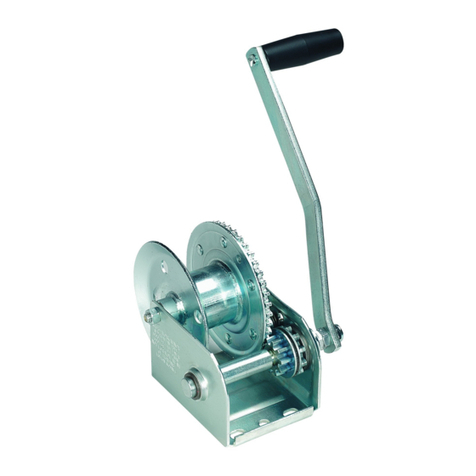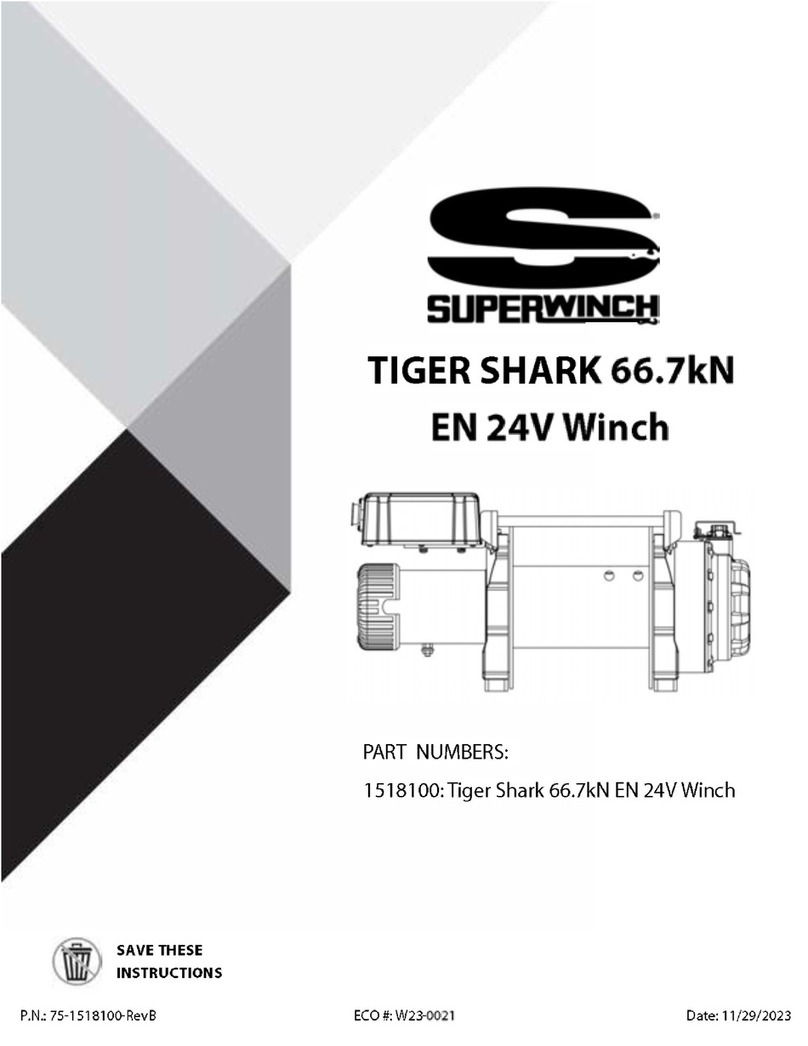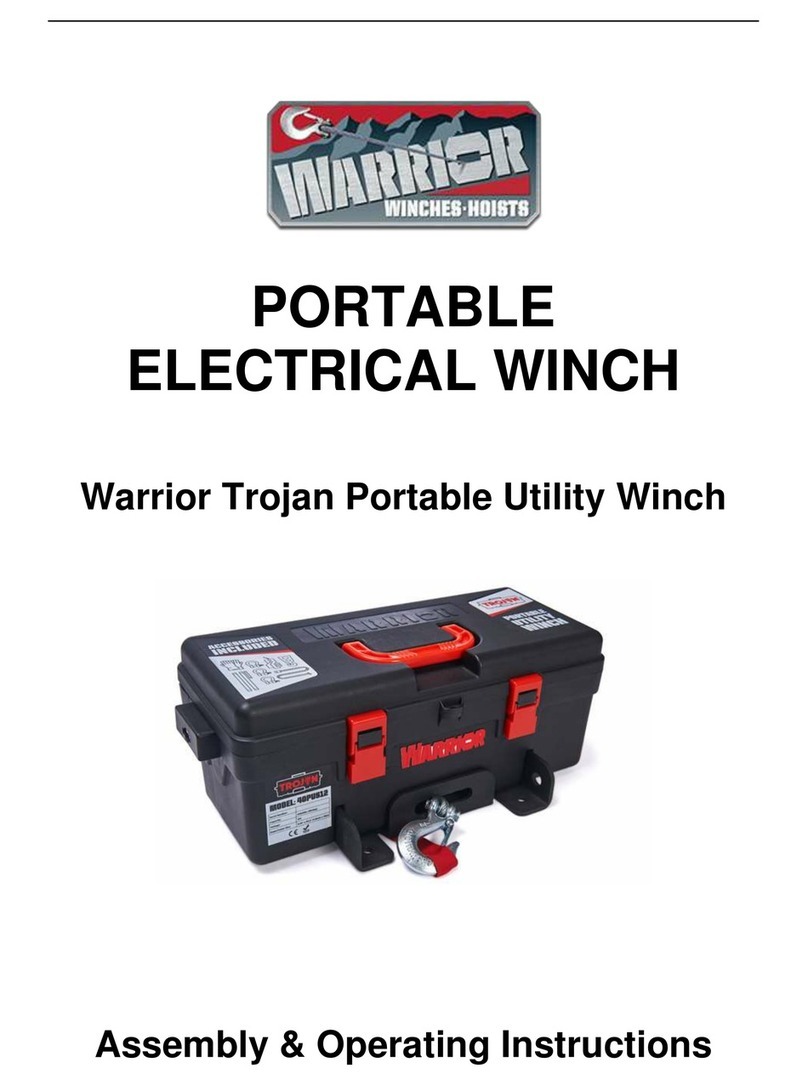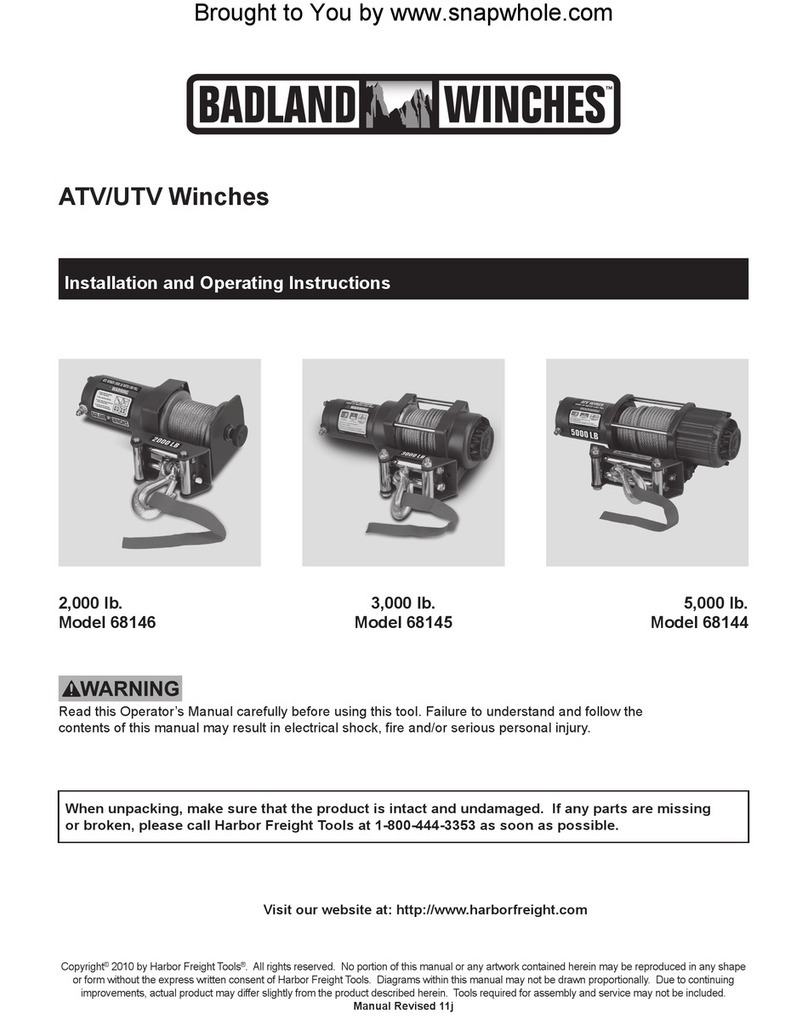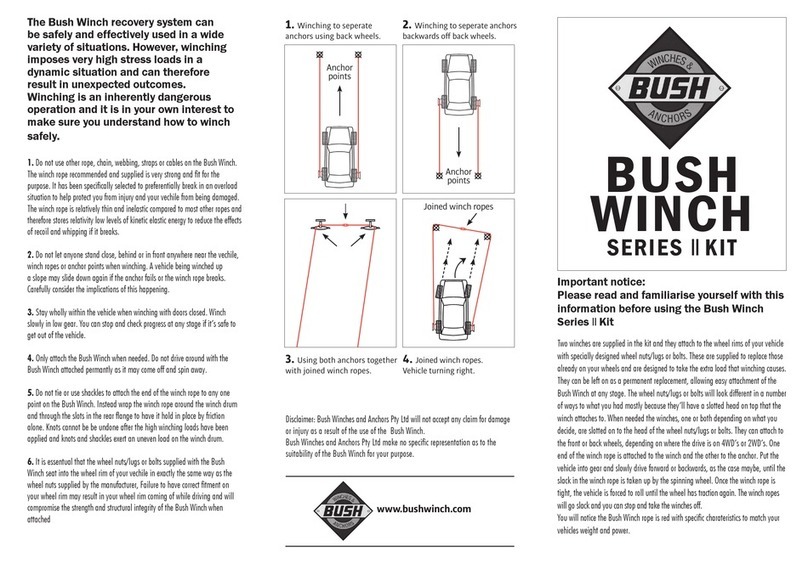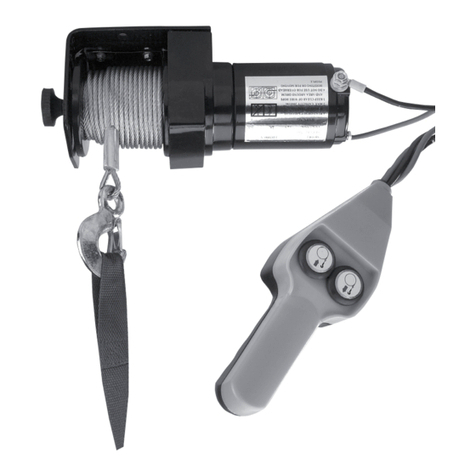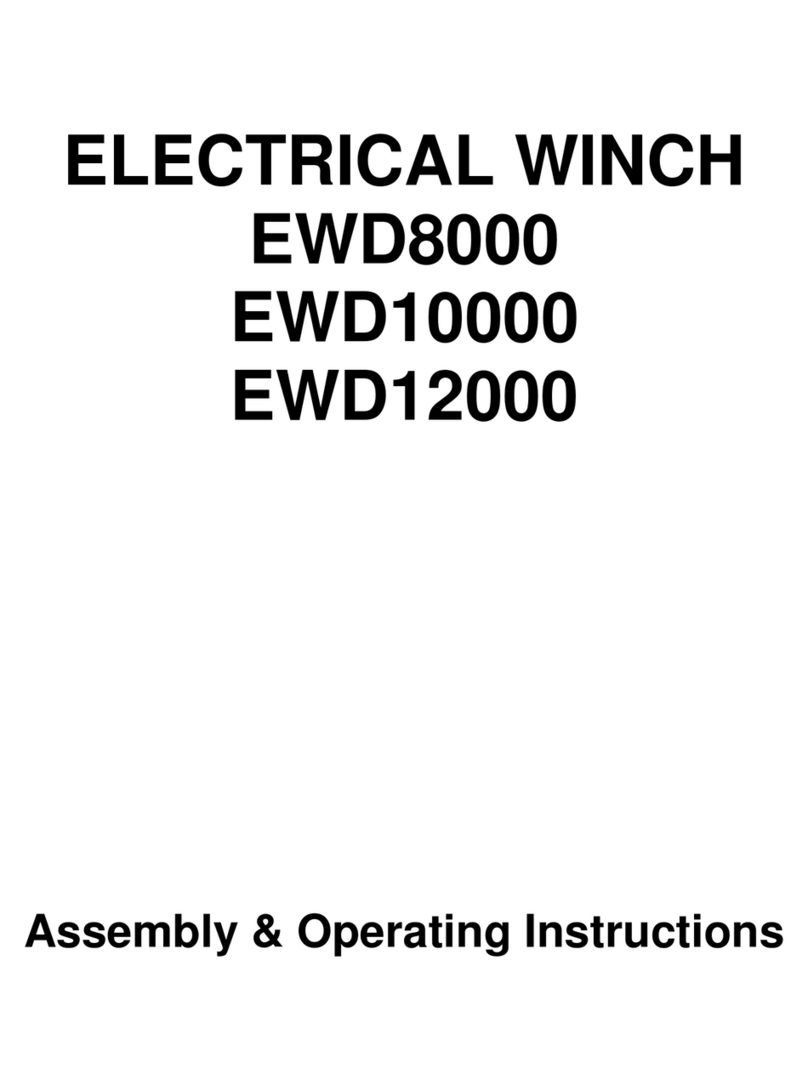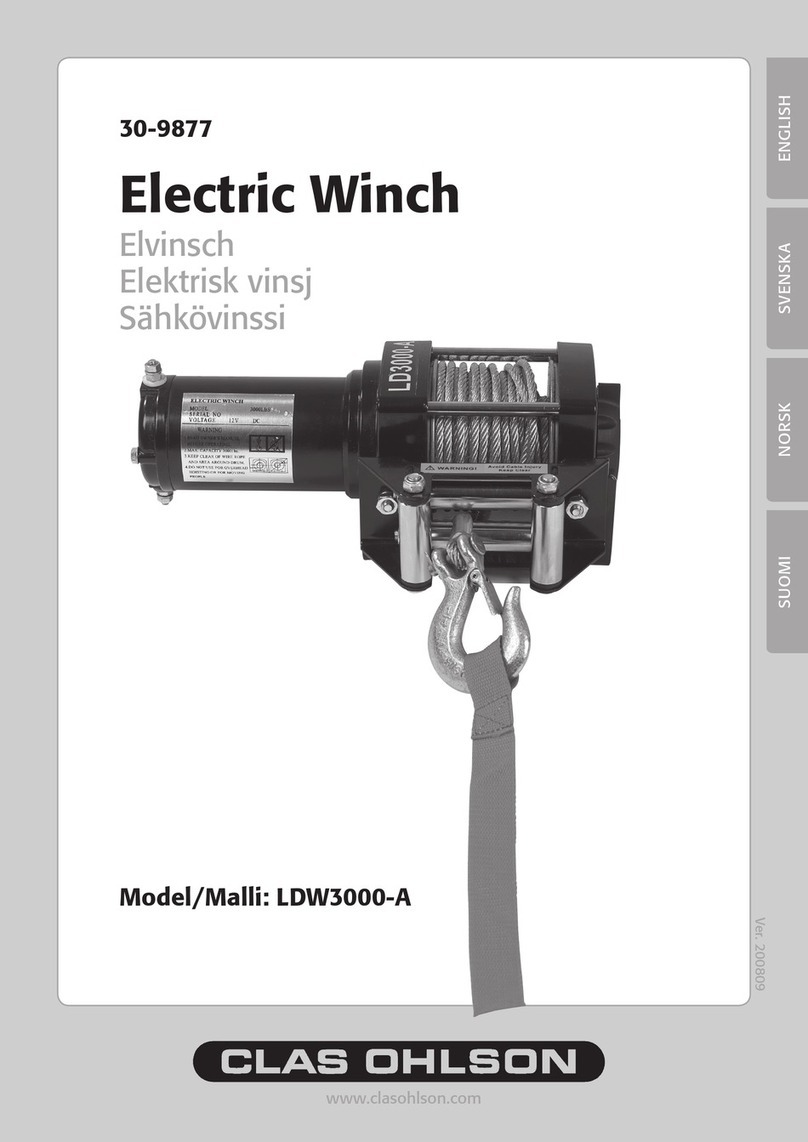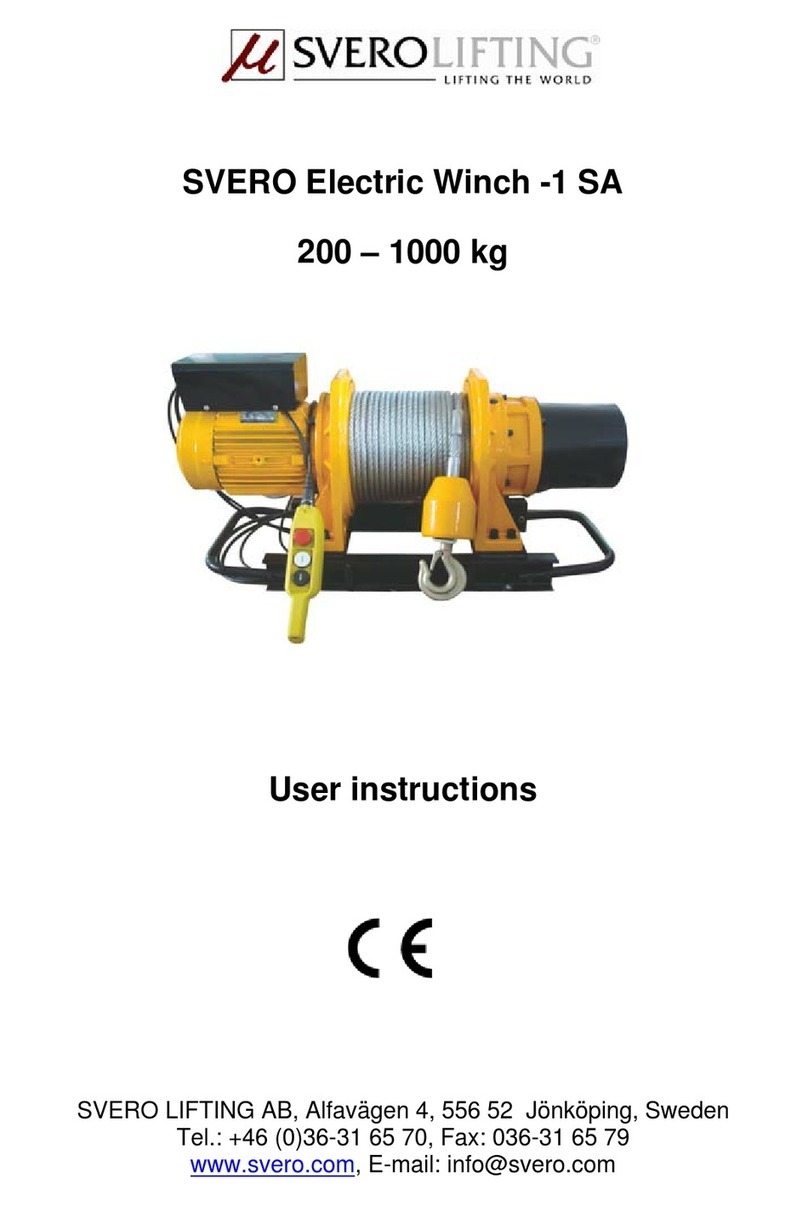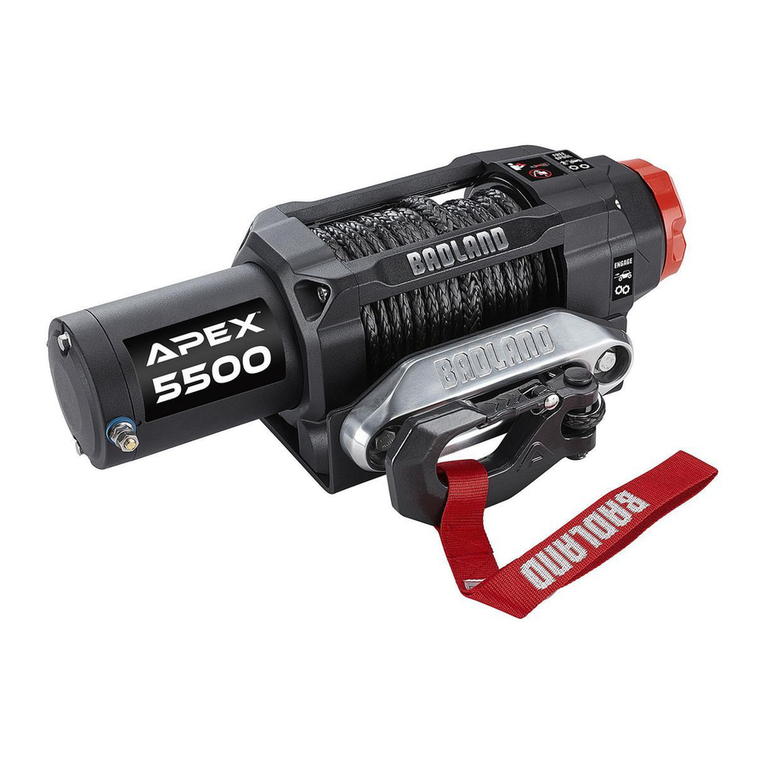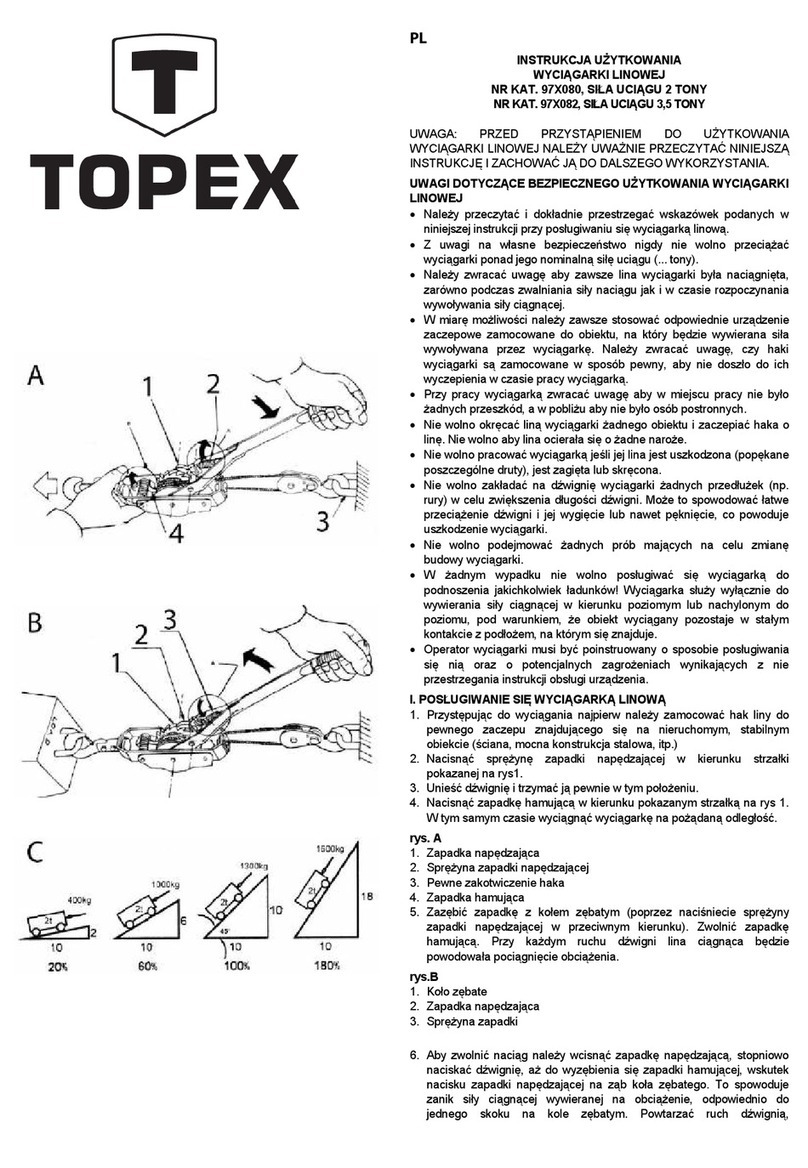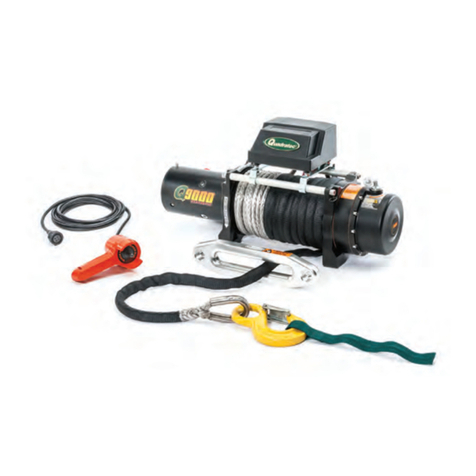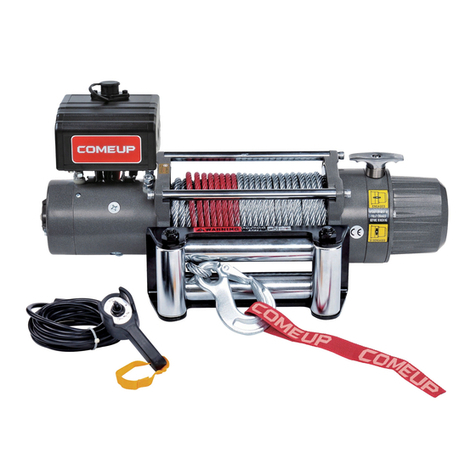
2
SVERO Wall-Mounted Winches -61A, -62A
SVERO Wall-Mounted Winches -61A, -62A are used for lifting loads with wire rope which is led
through one or more pulleys. Wire rope and pulleys are not included. Wall-mounted winches are
not intended for lifting persons. Installation must be carried out by specialists. These instructions
must always be available at the work site.
Wall-mounted winches of models 6211A and 6113A may also be used for rope routes
etc. on stage and in studios in accordance with SWEDISH STANDARD SS 767 15 01.
They are also used for high and lowerable light fittings etc. in public buildings such as
churches, exhibition halls, restaurants, sports halls and similar. For important detailed
information see the above Swedish Standard. In these user instructions the special
requirements applying when 6211A and 6113A are used for stage, studio and light
fittings in public buildings are noted in bold italic.
Technical data
Model Max. load
kg Rope diameter *
mm Rope capacity
mCrank
rotations per
m lifting height
Weight
excl.
rope
kg
6211A 250 4, 5, 639, 20, 12 32 12
6113A 600 6,8, 9, 10 36, 17, 11,6 34 27
6114A 1000 8, 10, 12 58, 37, 22 38 36
*The wire rope must be of round strand type with at least 114 wires, or 133 wires with a
steel core or equivalent. It must have a safety factor against breakage of at least 8 – see
also SS 767 15 01.
Mounting of wall-mounted winch
Mount the winch on a flat wall surface of sufficient bearing capacity. This must be particularly
observed in older buildings. Use suitable screws and tighten them equally hard (wood screws must
not be used). Check that the worm wheel and screw are greased and the bearings lubricated.
Tighten the crank with the hexagonal screw. The crank may be kept in an alternative location
protected from the public if this seems appropriate. If a wall-mounted winch is mounted high up
over a floor, it should be ensured that the crank cannot work loose and fall down. Secure the crank
by drilling a hole through the end of the crank shaft and pressing a locking pin of appropriate length
through it.
Outdoors, the wall-mounted winch must be protected from the weather with roof, cover or housing,
with ventilation from below.
Mounting the wire rope
Rope length must be long enough to ensure at least two turns (safety
turns) on the rope drum. Rope ends must be whipped or otherwise
protected from unravelling. Insert one rope end through a hole in the
right-hand flange of the rope drum and then lock as follows: With
press locks according to the Talurit method or by bending the rope
end double and fitting one or preferably two shackle locks.
The rope outlet must be such that the torque on the rope drum exerts
pressure on the backpiece and forces the parts of the reaction brake
together. The heavier the load the higher will be the brake friction.
The rope must therefore be pulled upwards from the side of the drum
nearest the wall, or alternatively downwards from the front side of the
drum as in Fig. 1.
Fig. 1 Rope arrangement
